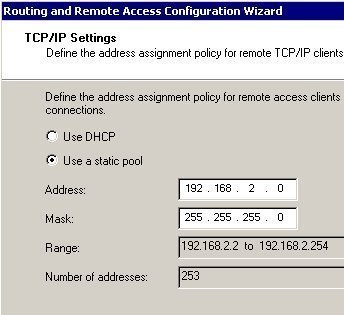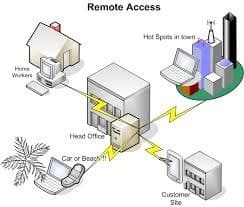Definition of Remote Access Service (RAS) in Network Encyclopedia.
What is Remote Access Service (RAS)?
RAS (Remote Access Service) is an optional Microsoft Windows OS Family networking service that provides remote access for remote clients. A machine running Windows on which Remote Access Service (RAS) is installed is called a RAS server.

How It Works
RAS allows remote clients to connect through a telephone line or other wide area network (WAN) link to the RAS server; from there RAS allows those clients to access resources on the network. Remote users can access network resources as though they were logged on to a machine directly connected to the network. To allow a user to connect remotely to the RAS server, use the administrative tool User Manager for Domains and grant the user dialin permission. You can set three forms of dialin permission:
- No call back: Gives the user permission to dial in to the network using the RAS server.
- Set by caller: Terminates the connection after the user dials in to the RAS server. The RAS server dials the user back at the phone number the user specifies. This function is called callback.
- Preset to: Also uses callback, but the server always calls the user back using a phone number preset on the server.
RAS on Windows provides both dial-in and dial-out capability, supporting up to 256 simultaneous inbound connections on Windows NT Server but only one inbound connection on Windows NT Workstation. Clients that want to connect to a RAS server must have dial-up networking or a similar application installed. RAS is fully integrated into the Windows NT security model and supports encrypted authentication, auditing, callback, and intermediary hardware security hosts. Users can be restricted to access to the RAS server only, or to access through the RAS server to all resources on the network.

Windows NT RAS supports clients connecting over the following media:
- The Public Switched Telephone Network (PSTN) using modems
- Dedicated Integrated Services Digital Network (ISDN) lines
- X.25 packet-switching networks
- A null modem cable
You can establish RAS connections with Windows NT by using any common local area network (LAN) transport protocol and the following WAN protocols:
- Point-to-Point Protocol (server-side or client-side), including Point-to-Point Tunneling Protocol (PPTP) for establishing virtual private network (VPN) connections
- Serial Line Internet Protocol (client-side only)
NOTE
An optionally available Windows NT 4 component called Routing and Remote Access Service (RRAS) replaces the existing RAS on Windows NT and provides additional Internet Protocol (IP) routing functionality.
On Windows 2000 Server, remote access functionality is provided by Routing and Remote Access, which supports both dial-up networking and virtual private networks.
TIP
You install RAS on a Windows NT server by using the Services tab of the Network utility in Control Panel.